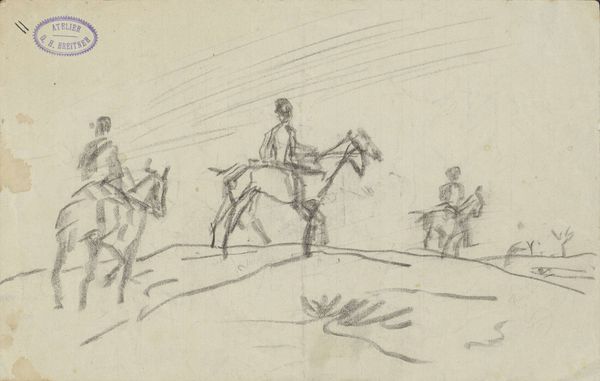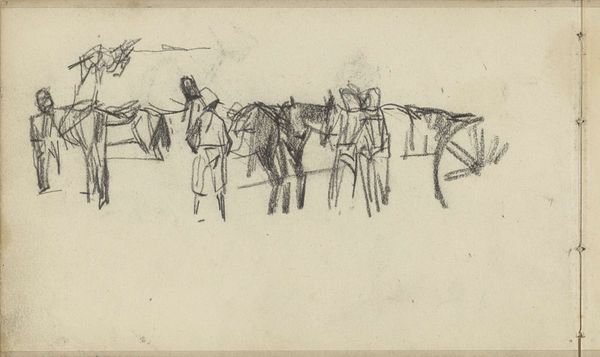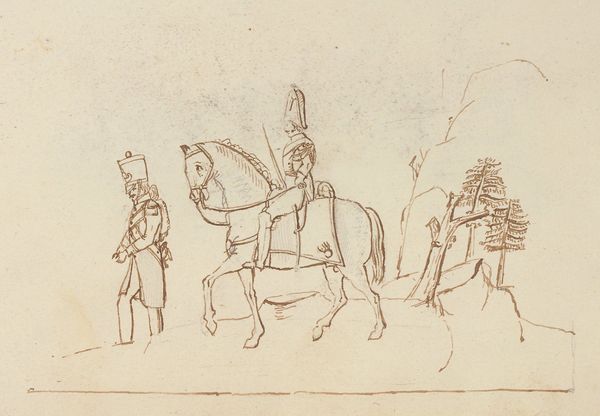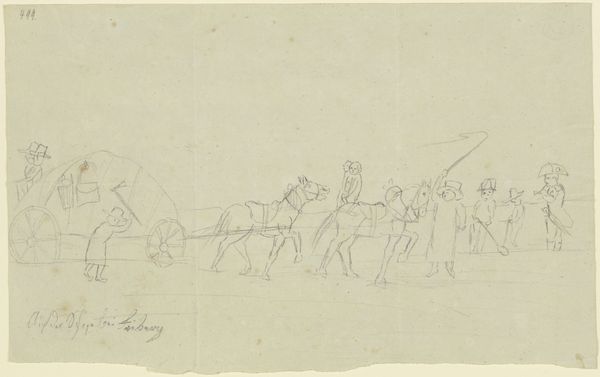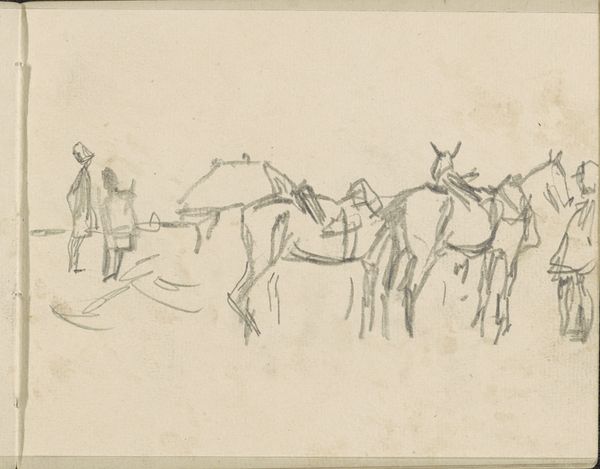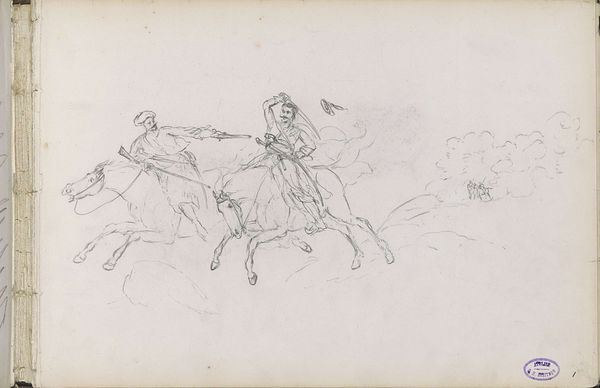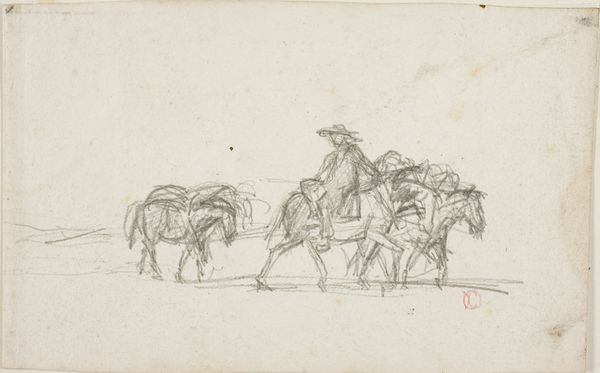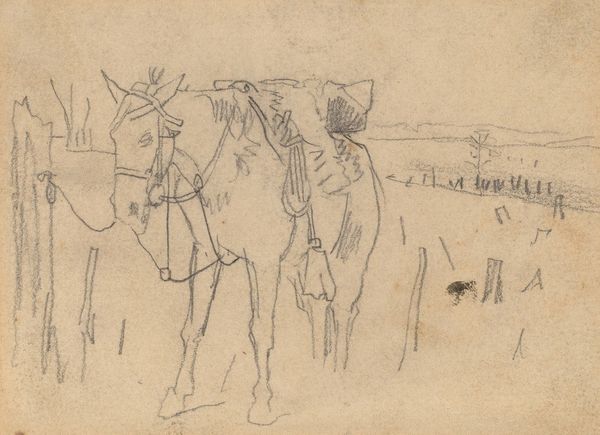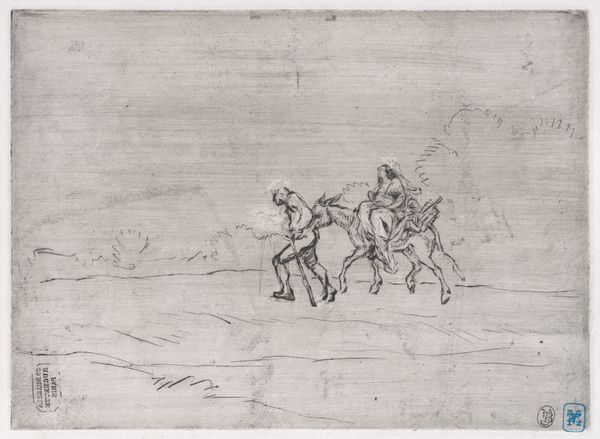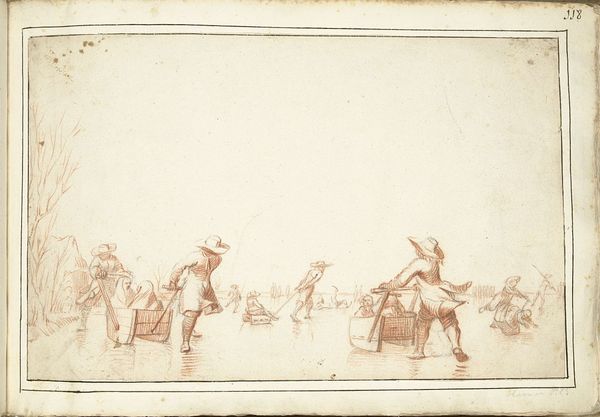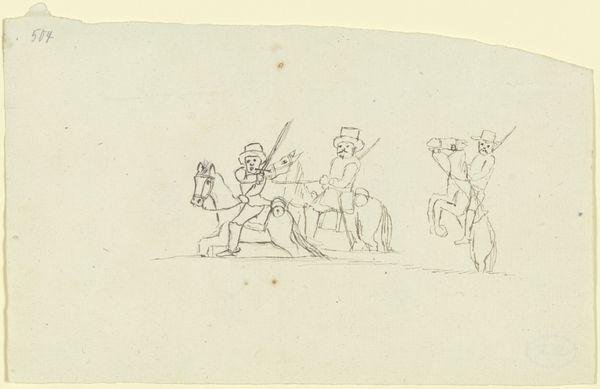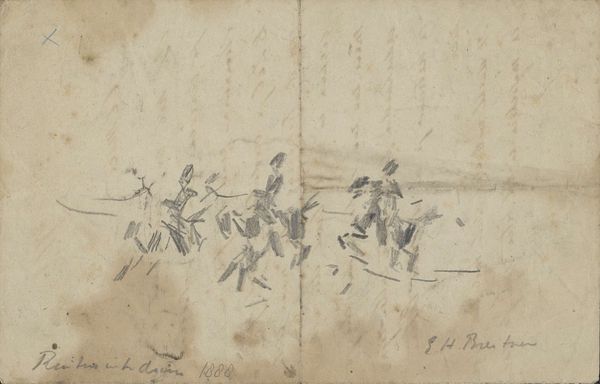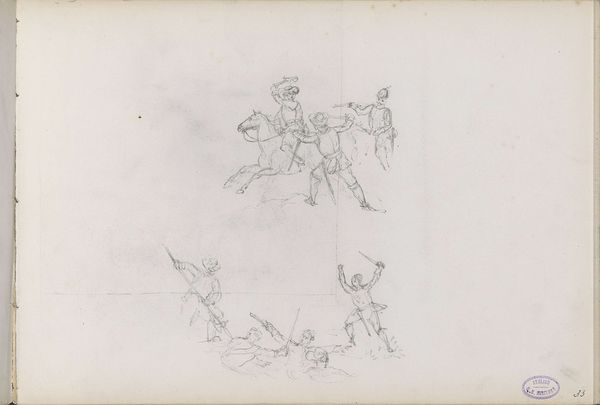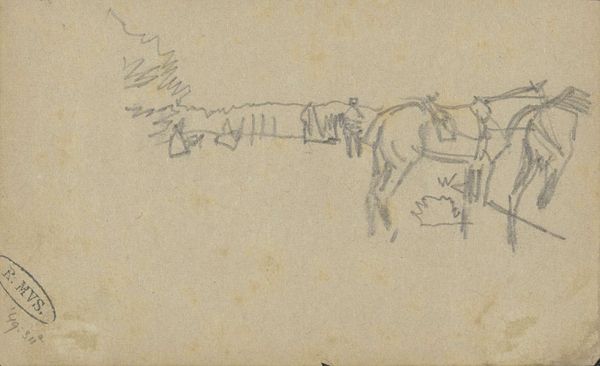
drawing, pencil
#
drawing
#
amateur sketch
#
light pencil work
#
quirky sketch
#
impressionism
#
incomplete sketchy
#
landscape
#
figuration
#
personal sketchbook
#
idea generation sketch
#
sketchwork
#
pencil
#
sketchbook drawing
#
sketchbook art
#
initial sketch
Dimensions: height 135 mm, width 212 mm
Copyright: Rijks Museum: Open Domain
Curator: Here we have a drawing by George Hendrik Breitner, titled "Landscape with Cavalry Soldiers," estimated to have been created between 1876 and 1886. It's currently held in the Rijksmuseum collection. Editor: My first impression? It's raw. The figures are just suggested, almost fleeting. You can practically smell the graphite. Curator: Exactly! Breitner was known for capturing everyday life in Amsterdam, often focusing on the working class. This drawing provides a glimpse into his process. How do the rough lines play into that do you think? Editor: The sketchiness lends a sense of immediacy. Breitner’s prioritizing capturing movement, the fleeting presence of these soldiers and horses. The visible strokes really emphasizes the handmade, the artist's direct engagement with the scene and the material. Curator: It is tempting to wonder, in Breitner's practice of photography alongside painting, where drawings such as these served in relation to those other works in terms of his final depictions. These were tumultuous years marked by social unrest, rising nationalism… Editor: Right, but consider the paper itself. What was the cost, the availability of materials at the time? And how does the act of sketching, quick and portable, differ from say, large-scale paintings that required studio space and assistants? Those factors shaped who had access to art making, what subjects were deemed worthy, and how these scenes were ultimately consumed. It becomes a democratic document when you look at the materiality, not only the society of the time. Curator: A critical tension, isn't it? Breitner sought to depict modern life, to engage with these social changes through observation of materials while the art world often favors more polished products... Editor: I see his quick lines as him playing within this tension—simultaneously nodding at artistic traditions of landscapes and battle scenes, yet breaking them down into these skeletal marks reflecting on art itself. Curator: A fascinating dialectic that underscores Breitner's own ambivalence within the art institutions he sought recognition from. Editor: It does makes me want to handle it, and study the tooth of the paper... Curator: Agreed, it's a powerful little object!
Comments
No comments
Be the first to comment and join the conversation on the ultimate creative platform.
